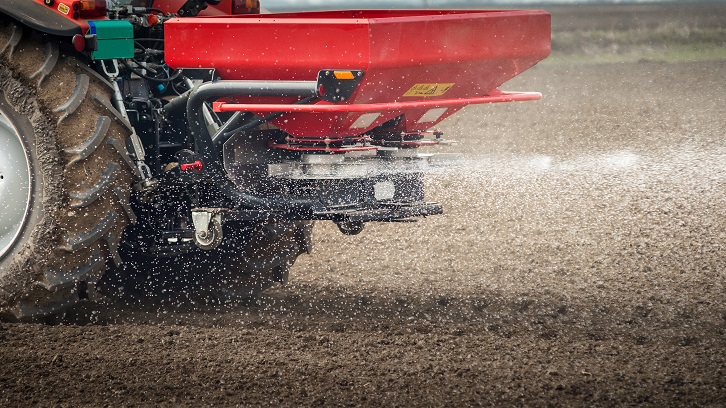Mapping nitrous oxide emissions from peri-urban agriculture

Nitrous oxide (N2O) is a gas with a 273 times higher global warming potential than Carbon dioxide (CO2), originated in agriculture and livestock cultivation, and rarely mapped for peri-urban areas. An ICTA research group has mapped its emissions from peri-urban agriculture at the Metropolitan Area of Barcelona through specific Emission Factors (EF) and management practices of the crops.
Nitrous oxide (N2O) is a gas with a global warming potential 273 times higher than CO2 according to the latest Assessment Report (AR6) from the Intergovernmental Panel on Climate Change. The main sources of N2O emissions are agriculture and livestock activities related to for example, nitrogen fertilization (chemical or organic), which together with water and certain soil conditions, may increases the natural microbial processes of nitrification and denitrification in the soil, creating more N2O emissions. Knowing where nitrogen fertilizer applications occur, which crop type is planted and whether irrigation takes place, is some of the vital information needed to determine where N2O emissions are more likely to happen and what are the best mitigation strategies.
Nonetheless, it is hard to find maps of crop type, fertilizer application, and irrigation methods, among others, for conventional agriculture production around cities also knows as peri-urban agriculture. Furthermore, crop-irrigation specific emission factors (EFs) for areas around cities are also rare, making N2O emissions maps from peri-urban agriculture also uncommon.
In this study, we have spatially distributed these factors for peri-urban agriculture in the Metropolitan Area of Barcelona (AMB), harnessing bottom-up data, and based on these, we created N2O emissions maps. We used two types of EFs, first, crop-specific EFs and second, the generic Tier 1 IPCC EF of 1% of N applied estimated to be emitted, for comparison. We also qualitatively assess the role of the soil types in the generation of N2O emissions.
The results show us that about 15% more emissions with Tier 1 EFs (i.e. 7718 kg N2O-N year−1) than those estimated with the crop-specific EFs (i.e. 6533 kg N2O-N year−1) for the entire AMB. Also, N2O emissions for most rainfed crop areas like cereals (e.g. oat and barley) and non-citric fruits (e.g. cherries and peaches), which cover 24% and 13% of AMB's peri-urban agricultural area respectively, are higher with Tier 1 EF. Conversely, crop-specific EFs estimate higher emissions for irrigated horticultural crops (e.g. tomato, artichoke) which cover 33% of AMB's peri-urban agricultural area and make up 70% of the total N2O emissions (4588 kg N2O-N year−1 using crop-specific EFs). N2O emissions mapping helped to evaluate the parameters’ geographic variability.
We realized that optimal data geographic representativeness is not achieved because regional data was used to represent urban level data gaps. The mapping process also highlighted core emitting areas in particular the Baix Llobregat and Vallès Occidental regions. Ideally, onsite data on crop management practices could help reduce uncertainty due to geographic representativeness and lead to more robust emissions estimates at the farm level. We hope these estimates will feed further studies on mitigation, sustainability and circularity strategies applicable to the peri-urban agriculture production in the AMB.
1. Institute of Environmental Science and Technology (ICTA-UAB), Universitat Autònoma de Barcelona
2. Department of Chemical, Biological and Environmental Engineering, Universitat Autònoma de Barcelona
References
Angelica Mendoza Beltran, Kelzy Jepsen, Martí Rufí-Salís, Sergi Ventura, Cristina Madrid Lopez, Gara Villalba, Mapping direct N2O emissions from peri-urban agriculture: The case of the Metropolitan Area of Barcelona, Science of The Total Environment, Volume 822, 2022, 153514, ISSN 0048-9697, doi.org/10.1016/j.scitotenv.2022.153514


